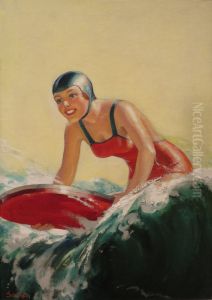William Fulton Soare Paintings
William Fulton Soare was an American artist known for his landscape paintings, particularly those depicting the American Southwest. Born on December 4, 1896, in Rock Island, Illinois, Soare developed an interest in art at an early age.
After serving in World War I, Soare pursued his passion for art by studying at the Art Institute of Chicago. He further honed his skills under the tutelage of renowned artists such as Walter Ufer and Martin Hennings, who were associated with the Taos Society of Artists. Their influence was evident in Soare's work, which often featured the vivid colors and light of the New Mexico landscape.
Soare's career as an artist encompassed both painting and teaching. He taught at the Art Institute of Chicago and later at the American Academy of Art, influencing a generation of young artists. His work was exhibited in various prestigious venues, including the Art Institute of Chicago, the Pennsylvania Academy of the Fine Arts, and the National Academy of Design.
Throughout the 1920s and 1930s, Soare's work gained recognition, and he became known for his ability to capture the unique beauty of the Southwest. He was particularly adept at depicting the grandeur of the desert and the subtleties of its changing light, often working en plein air to directly capture the nuances of the scene before him.
William Fulton Soare continued to paint and teach until his death on February 16, 1965. His legacy includes not only his contribution to American landscape painting but also his influence as an educator. His works can be found in various collections and continue to be appreciated for their vibrant depiction of the American landscape.
